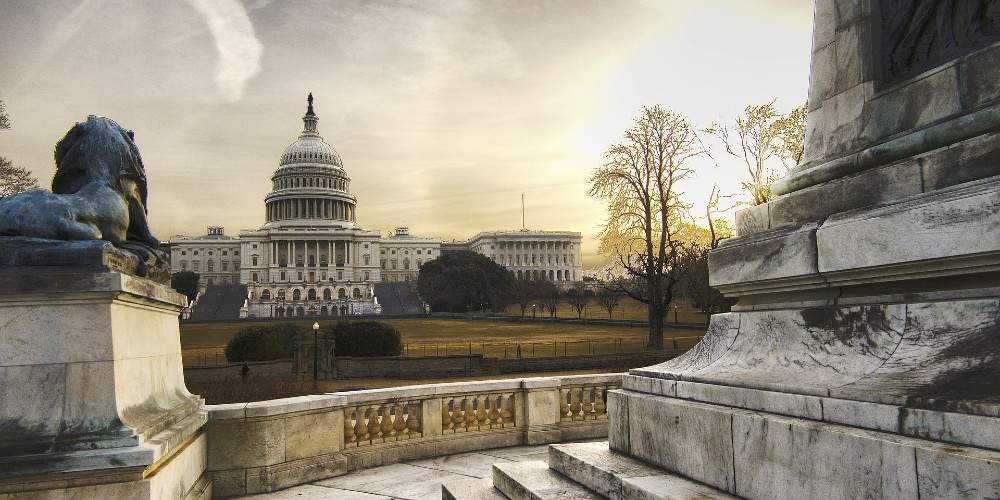American voters are concerned about the country’s national debt, which has ballooned over the past decade, with many expressing worries about the $1.7 trillion spending bill that President Joe Biden signed into law last month, according to a recent survey by Rasmussen Reports.
When asked how worried they were about the U.S. national debt, which currently stands at $31 trillion, 76 percent of respondents said they’re concerned about the situation, with 53 percent claiming to be “very concerned.” Only 21 percent weren’t concerned about the debt size.
Politically, 87 percent of Republicans, 73 percent of unaffiliated voters, and 67 percent of Democrats were somewhat concerned about the issue. A total of 69 percent of Republicans, 53 percent of unaffiliated voters, and 38 percent of Democrats admitted to being “very concerned” about the debt.
When asked about the $1.7 trillion omnibus spending bill, only 45 percent said they “somewhat approve” of the legislation. Among Democrats, 73 percent approve of the bill. However, almost 46 percent of Democrats also agreed that the bill is a “monstrosity” and “disaster for our country,” while only 32 percent “strongly” agreed with it.
Overall, 61 percent of total respondents either somewhat or strongly agreed with this stance. The survey was conducted among 1,000 likely U.S. voters between Jan. 2 and Jan. 4.
On Dec. 31, 2021, the federal debt was $29.62 trillion. It rose to $31.42 trillion by Dec. 30, 2022, which is an increase of $1.8 trillion in a year.
Ballooning Debt Level
The U.S. national debt crossed $30 trillion in January 2022 and $31 trillion in October 2022. A decade back, the national debt was only $16 trillion, roughly half of what it is today. And in 2000, the debt stood at $5.7 trillion.
At $31 trillion, the current national debt is 121 percent of the U.S. gross domestic product (GPD). The national debt has never been this high in American history, either as a proportion of GDP or nominally.
According to a Dec. 19, 2022, report by Penn Wharton Budget Model, the national debt is projected to rise to 225 percent of GDP by 2050 and keep increasing thereafter.
“Current U.S. fiscal policy is in permanent imbalance as current debt plus projected future spending outstrips future tax revenue,” the report reads.
“Achieving fiscal balance would require the federal government to permanently increase tax revenues by over 40 percent or reduce expenditures by 30 percent or some combination of both.”
The report cites “total skill-adjusted adjusted labor input” as a “key productivity measure” that’s critical to government finances. This metric is predicted to fall by more than 50 percent in the next three decades.
The total skill-adjusted adjusted labor input measures three types of important workforce data: changes in population size, labor force participation, and relative wages.
Debt Consequences
The massive $31 trillion debt can result in serious negative consequences for the U.S. economy. In an interview with the Washington Examiner, Brian Riedl, a senior fellow at the Manhattan Institute, said that U.S. debt is going to exceed even Japan’s debt, which is the “largest debt as a share of the economy in the entire industrialized world.”
If the debt levels go out of control, the United States could end up being unable to meet its debt obligations. This can spook investors, cause interest rates to rise, push up inflation, and trigger a recession or depression.
To prevent a default, the government might even consider raising taxes sharply or cutting back on spending significantly. If the administration resorts to money-printing, this also adds to the risk of inflation.
“The real danger is if they wait 10 or 15 years, seeing the debt really grow to an uncontrollable level, and then have to do drastic and brutal tax increases and spending cuts that will cause a lot more pain,” Riedl said. “If they do it now and do it right, I think that the economic pain can be minimized.”
Article cross-posted from our premium news partners at The Epoch Times.
Survival Beef on sale now. Freeze dried Ribeye, NY Strip, and Premium beef cubes. Promo code “jdr” at checkout for 25% off! Prepper All-Naturals
What Would You Do If Pharmacies Couldn’t Provide You With Crucial Medications or Antibiotics?
The medication supply chain from China and India is more fragile than ever since Covid. The US is not equipped to handle our pharmaceutical needs. We’ve already seen shortages with antibiotics and other medications in recent months and pharmaceutical challenges are becoming more frequent today.
Our partners at Jase Medical offer a simple solution for Americans to be prepared in case things go south. Their “Jase Case” gives Americans emergency antibiotics they can store away while their “Jase Daily” offers a wide array of prescription drugs to treat the ailments most common to Americans.
They do this through a process that embraces medical freedom. Their secure online form allows board-certified physicians to prescribe the needed drugs. They are then delivered directly to the customer from their pharmacy network. The physicians are available to answer treatment related questions.


